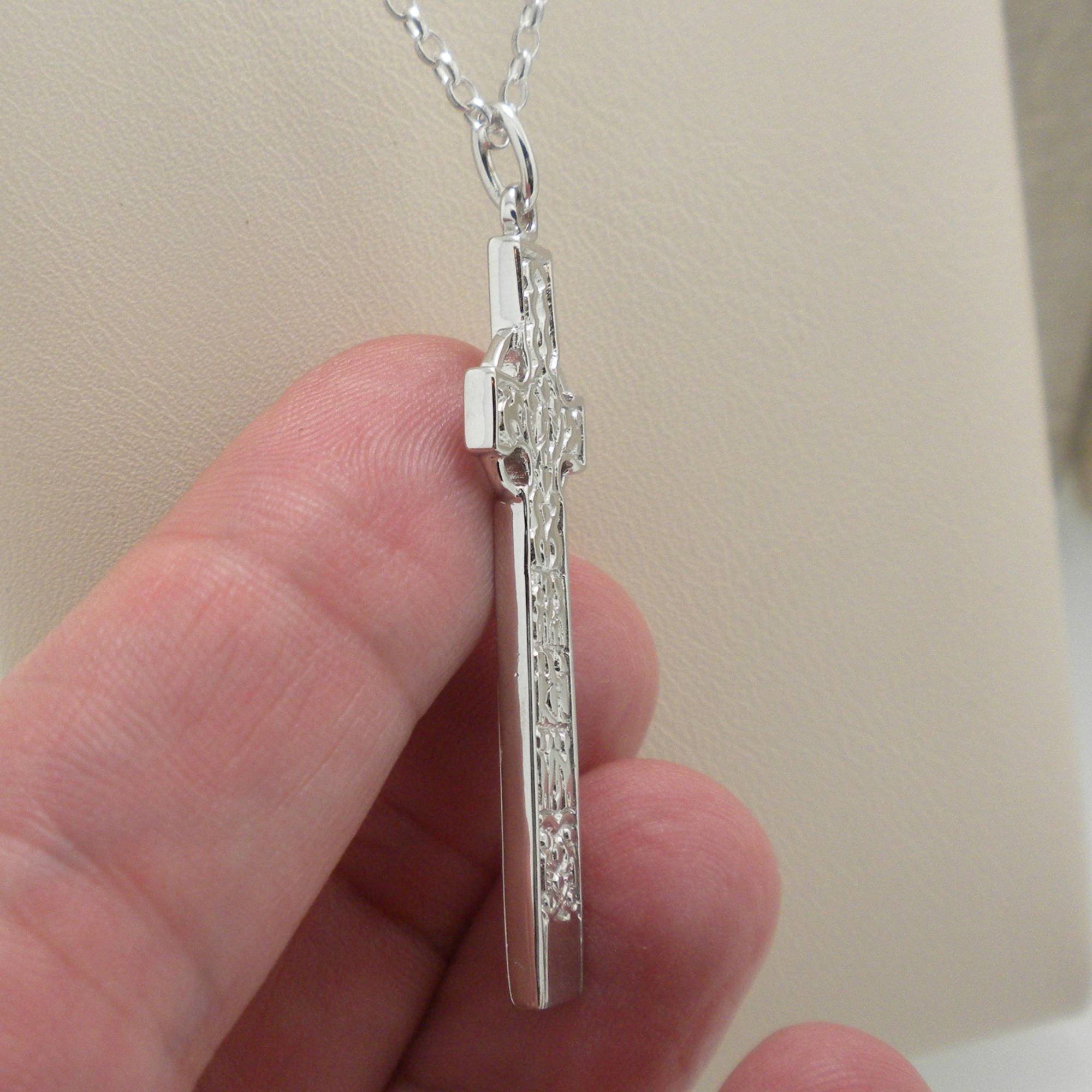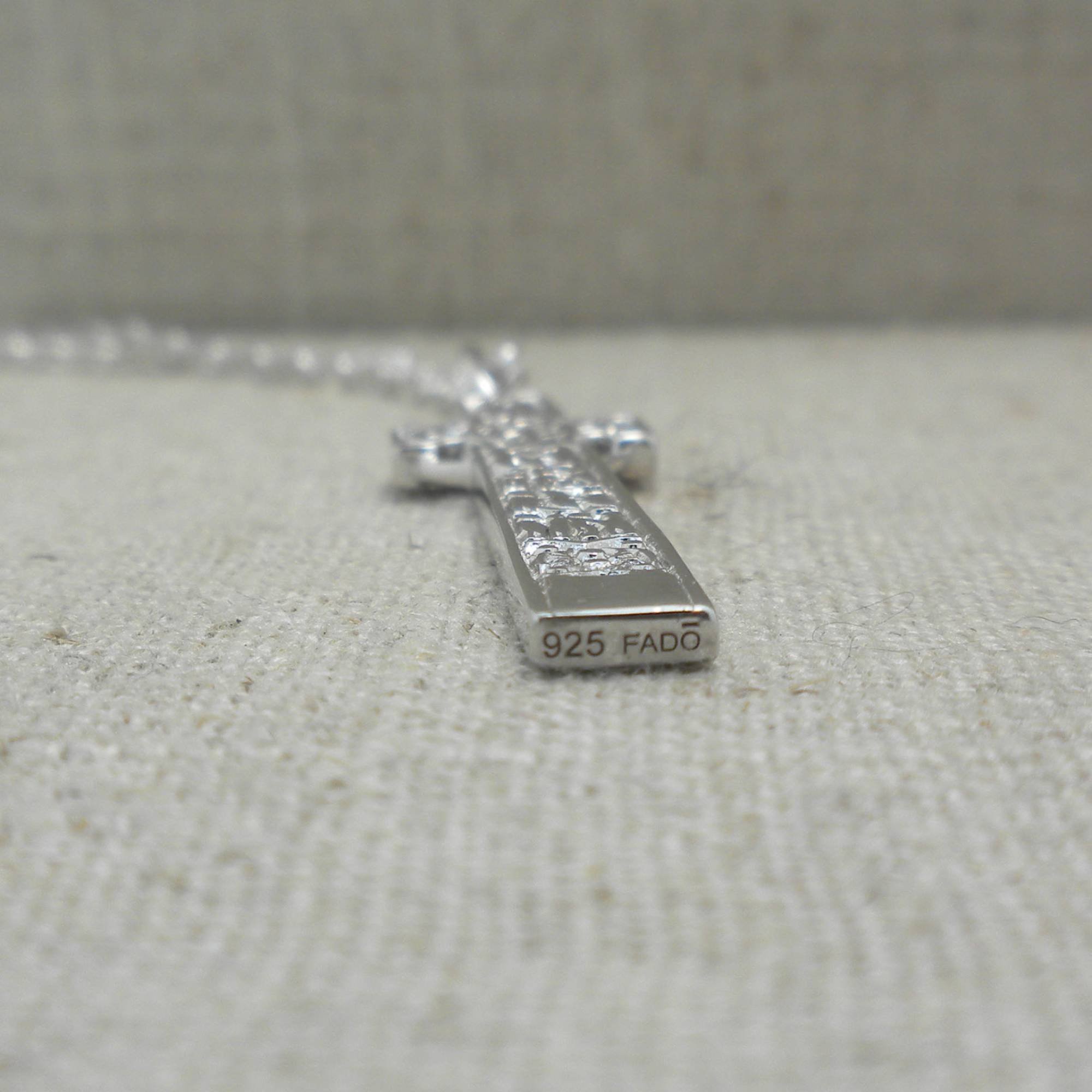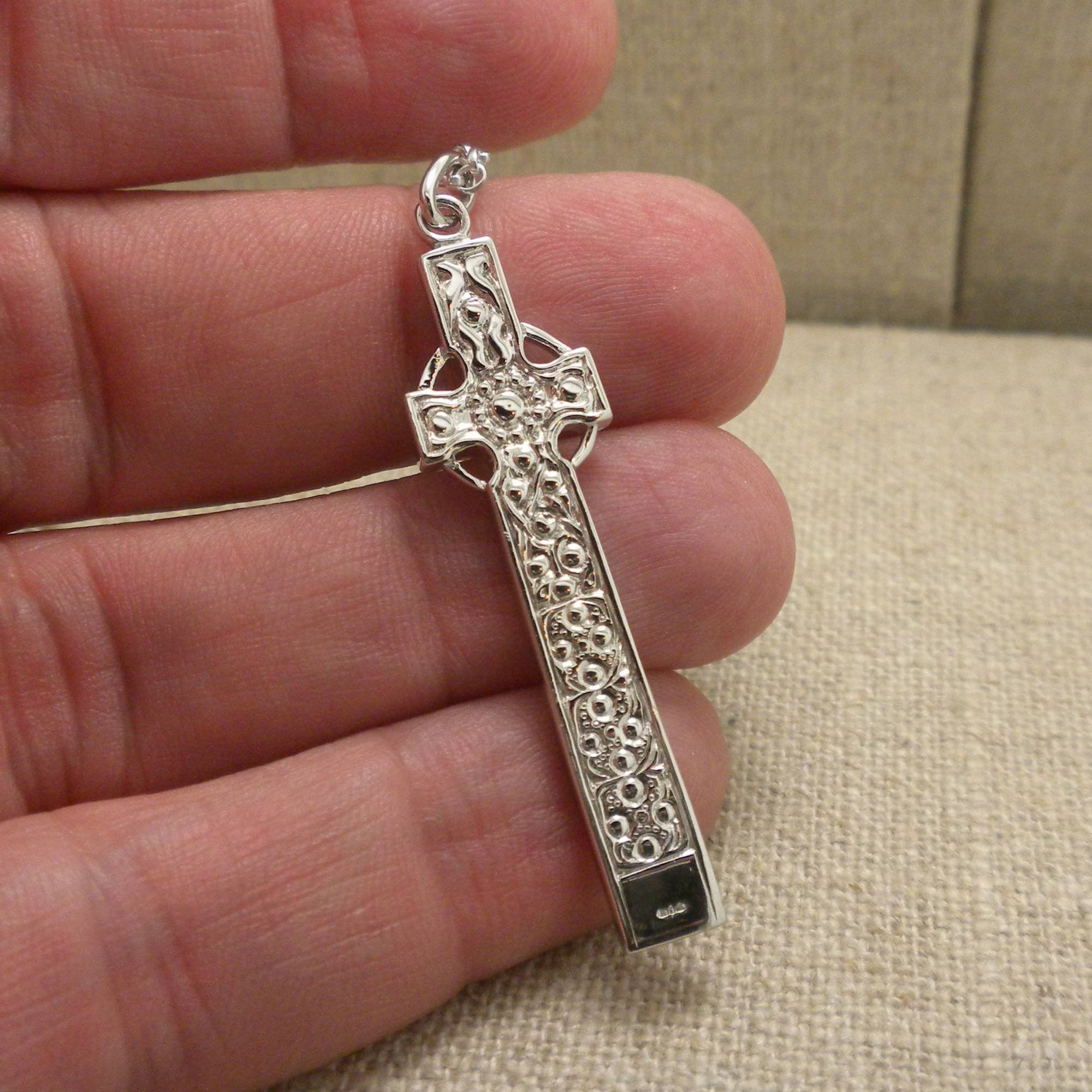Sterling Silver Iona Celtic Cross


Sterling Silver Iona Celtic Cross
In Stock! Ships Immediately!
Sterling Silver Irish Iona Celtic Cross Made in Ireland by FADO
Double Sided
1 7/8" x 1/2"
18" Sterling Silver chain
This attractive cross embodies the inspiration and spirit of the Great High Crosses of Ireland, carved and erected in the ninth and tenth centuries to celebrate learning and piety, great events and great men of their time.
Boxed for gift giving.
Celtic Cross made in Ireland by FADO
This Cross Ships for Free and is Returnable.
SKU: FD-XP60-SIL
Iona Celtic Cross
Iona is a small island off the Isle of Mull in western Scoutland. It has been a “holy isle” since the time immemorial. One of its early Gaelic names was “Isle of the Druids”. St. Columba (Columkille) went to Iona in 563 and founded a settlement in the Celtic style, where monks living in separate cells, coming together for meals and community prayer. They traveled from Iona to mainland Scotland, to preach the Gospel and establish other settlements.
Columba returned to Ireland in 575 to defend the poets of Ireland at the Council of Drumcaet. When in Ireland he visited some of his earlier settlements and founded the monastic settlement at Drumcliffe. He then returned to his “home” in Iona and died there in 597. Iona continued to grow and flourish.
During the 7th Century it had the largest library in Europe and up to 300 Celtic Crosses. repeated Viking invasions led to the destruction of the library and almost all the crosses - thre are now only three remaining. The most famous of three is the cross dedicated to St. Martin of Tours, which was probably carved at the end of the 8th Century.
Martin lived in France in the last years of the 4th Century. He was a Roman soldier who became a Christian but remained in the army to complete his appointed term. There is a famous El Greco painting of St. Martin sharing his Roman cloak with a beggar. At some point in his life he read about St. Antony of Egypt who had left city life to live as a hermit in the desert. This appealed to Martin and when he left the army he set up a hermitage near Poitiers in France. Each monk/hermit had his own cell. They all met for meals and communal prayers and were bound in obedience to the head of the settlement. When Martin was appointed Bishop of the Tours he moved his fellow hermits to a settlement outside Tours and continued to live among them.
No one knows how a cross on Iona in Scotland, as island that had such close and continuing connection with the Columban monasteries in Ireland, came to be dedicated to this French saint. Irish monks were familiar with the “desert fathers” St. Antony and St. Paul and perhaps it was the fact that St. Martin also turned his back on life’s comforts to live a life of contemplation and prayer that drew them to celebrate him.


